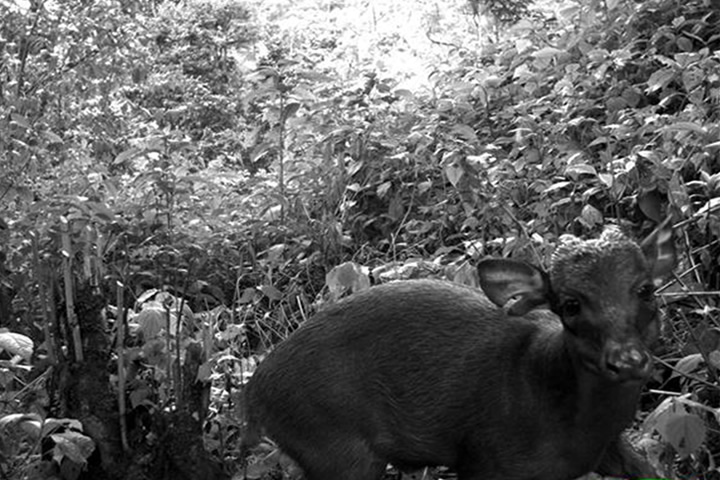This is our most exciting year for camera trapping in terms of the number of surprising records as part of our TEAM Network terrestrial vertebrate monitoring.
We have captured three species that we have not recorded before. From a single location (approximately 1km from the park boundary), I bring you images of one of this year’s mystery animals (the Weyns’s duiker). The camera is located at an altitude of 2153 meters above sea level. The forest in this area is open dominated by herbaceous vegetation of Mimulopsis solmsii. What I found intriguing is how this animal has eluded our three-year camera trapping survey that has yielded over 60,000 images.

From the images, it is not surprising that it was easy to confuse this animal with its close relative – the Black-fronted duiker (Cephalophus nigrifrons). In fact, at first sight I thought the animal was an unusually heavy-horned Black-fronted duiker. However, the rather faint demarcation of pattern on the face and the large sized horns made me think otherwise.

These observations triggered me to share the images with my colleagues at ITFC. After several inquiries, no one could be certain about the animal’s ID. I later sent the images to Jonathan Kingdon who is an authority on African mammals for expert identification. Based on the broad forehead and robust horns, Jonathan identified the mystery animal as the Weyns’s duiker (Cephalophus weynsi). What is interesting from Jonathan’s analysis is that this species is typically a lowland forest species, and he suspects that where the photo was taken must be close to its upper altitudinal limit.
Please enjoy the images of the mystery duiker on our candid cameras and let me know your thoughts.


